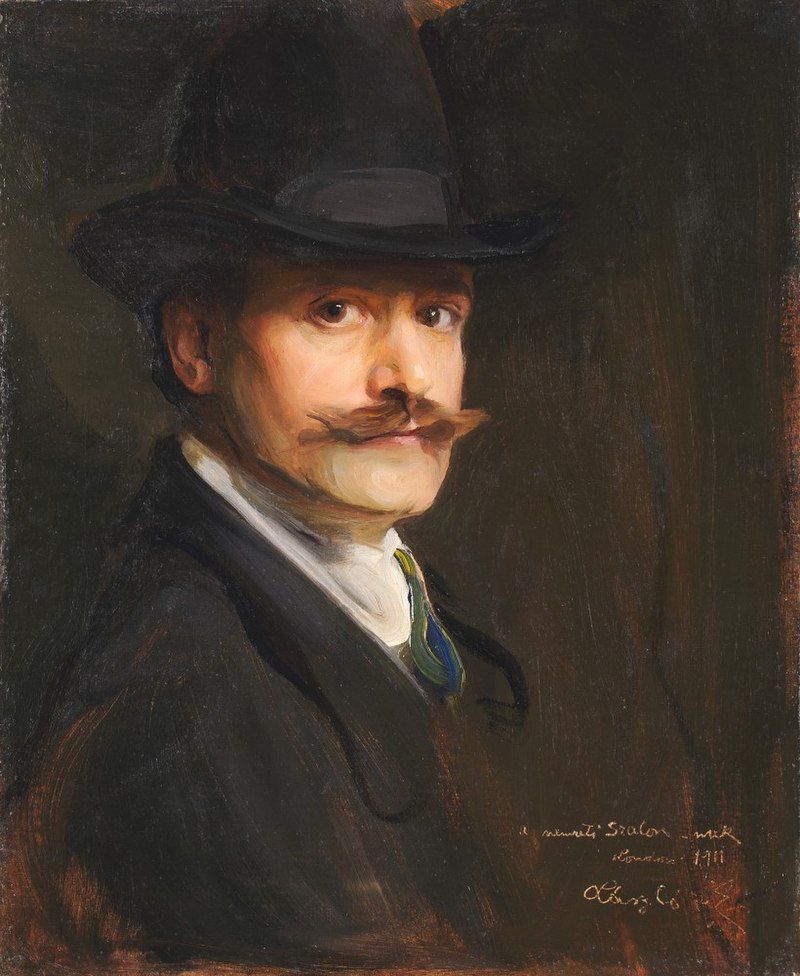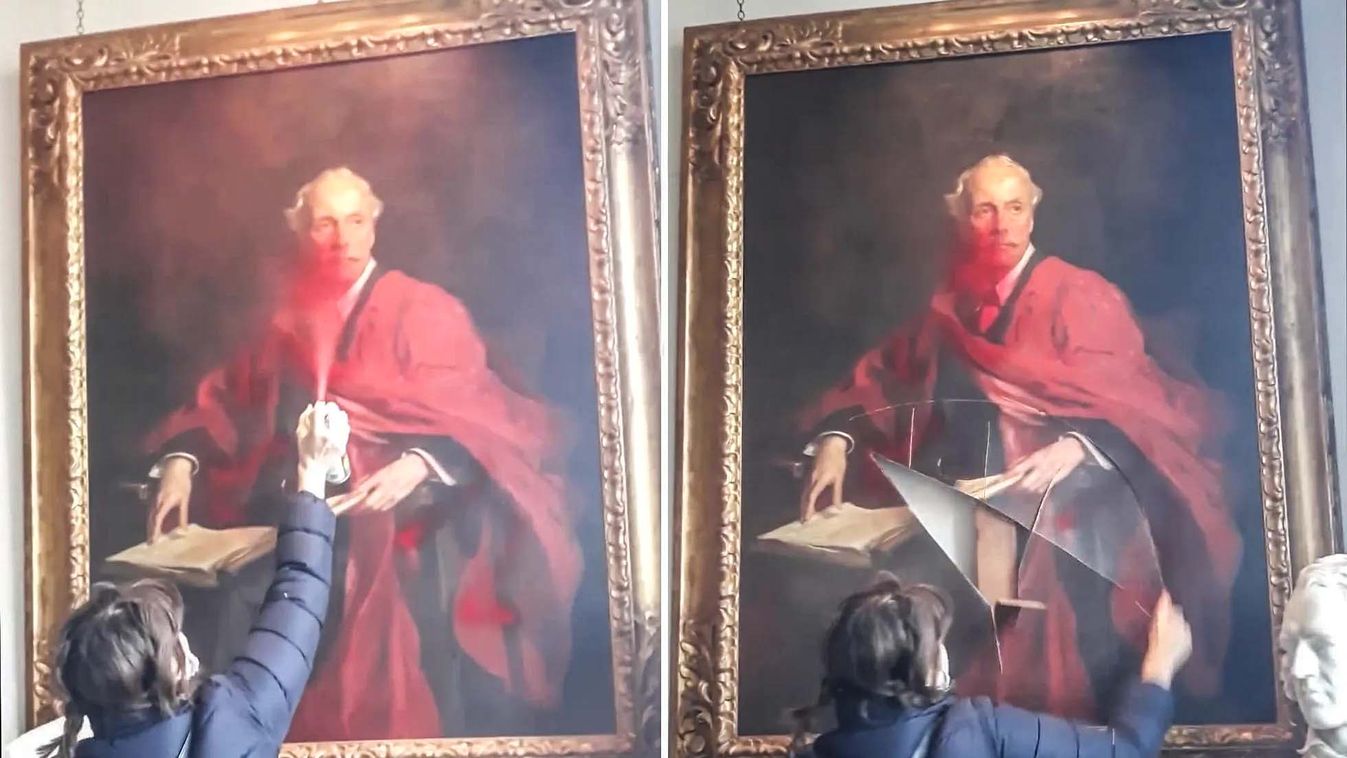As before Daily Mail report On the basis of what we wrote, the work of the world-famous Hungarian painter was copied at Cambridge. László Fülöp artist Elek Lombosi, whose birth name was Fülöp Laub, took the name Philip Alexius de László after his naturalization in England. We tried to find out if it was possible to restore the painting after vandalism. In the second half of our article, we present to you the world-famous painter, whose name may not seem familiar to everyone.
What does the expert say – can the painting be saved?
We asked the visual artist Peter Fellini, in his opinion, whether it is possible to restore this broken painting.
“Fortunately, based on the video, there appears to be no shortage,” the visual artist said.
The attacker opened it with a sharp tool so that not a single piece would fall out. It has to be stretched behind another canvas and attached to the back of the original with the help of wax. Then the cut pieces must be tied together with thread, after which the joints can be replaced with paint. However, the red paint that has been sprayed must be removed before replacement. I see that it is acrylic paint, with a different solvent than the one used to paint the picture originally. Maybe you can take it off gently, although it won't be easy, it will be a very delicate job
he added.
The beginning of the career of the world-famous Hungarian painter
Philipp Alexius de László was born into humble circumstances in the city of Pest in 1869. He completed his studies at the Industrial Design School and then at the Model School as a student of Bertalan Szekely, who painted mainly historical pictures, and Karoly Lutz, known mainly for his frescoes. He subsequently studied at the Academy of Fine Arts in Munich and spent a year in Paris at the Académie Julian. He is known for his portraits, but he also painted portraits and landscapes of Hungarian rural life and the sites of his travels. In 1894, he received the first government order for a portrait of Justice Minister Dezső Szilágyi.
He probably wouldn't have gotten bigger orders so quickly if Cosmos Joint Stock Company hadn't asked him for a bigger job. Philippe de Laszlo was chosen to paint the portrait of Bulgarian Prince Ferdinand. This worked so well that the prince embraced the young artist and introduced him to his relatives and some of the princely court.
After the turning point
- In 1899, Emperor Franz Joseph sat as his model, and a year later
- Thirteenth. His portrait of Pope Leo in the Vatican won the Grand Gold Medal at the Paris International Exhibition.
- In 1900, Queen Victoria asked him to paint a portrait of her favorite general, Sir George White.
- This year he also created a work about members of the German Imperial Family.
He settled in London in 1907, where an exhibition of his work opened at the Arts Society in the same year, and shortly afterwards he received an invitation to paint members of the British royal family. Celebrities like
- Seventh. king Edward of England,
- General Artur Georgi
- Miklós Horthy,
- Jerome K. Jerome English writer,
- Thirteenth. Pope Leo, as well
- US President Theodore Roosevelt.

His artistic belief:
When I paint a portrait, I allow myself to be influenced above all by the general appearance and the mental and spiritual world of the individual to be painted. Of course, this depends on the artist's personality and spiritual culture, to what extent and in what direction. As in life, as in front of nature, we must always face the person we paint with love, sincerely and frankly, as this is the only way to create serious and individual art.
He regularly exhibited his work at the Műcsarnok, the Salon in Paris, the Venice Biennale, the Glaspalast in Munich, and the Künstlerhaus in Vienna. He has held exhibitions in Berlin, Budapest, London, New York and Paris. Many of his works are held by the Hungarian National Gallery, and his works can be found abroad in Paris, Rome, Oxford, Florence and elsewhere.












































